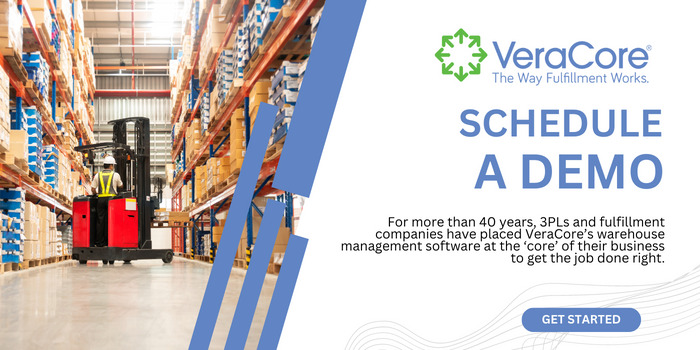Supply chains often face pressure from inflation and disruptions, increasing the need for better coping mechanisms. Companies now require strategies that combine innovative approaches with advanced technologies, that effectively optimize labor and resources.
The current inflation trends affect every aspect of the supply chain, from raw material suppliers to end consumers. When each aspect of the chain undergoes a cost increase, companies need to make adjustments accordingly, resulting in higher prices. While such price hikes can be sustained to an extent, they can have repercussions for your financial success and profitability.
While economists predict a decline in inflation rates later in the year, the effects will be seen in the form of supply instability, rising prices, and logistic disruption. Hence, cost-effective solutions need to be in place to manage operational expenses, without compromising the quality of services rendered
Identifying Ways to Cut Costs During Inflationary Periods
With careful planning and execution, merchants can leverage the use of technology and 3PL services to save costs that normally go toward labor, supplies, and energy resources.
Here are some effective methods to consider:
Visualize your Spending
Reconsider if your current costing is transparent and fully understood. The data you have might be lacking and require refinement before it transforms into valuable insights. Then you need to carefully analyze this data to pick up on kinks. For instance, if you’re procuring the same items from various suppliers, you can negotiate the price in a better way to save money. Similarly, you can minimize transportation costs by optimizing routes and consolidating carriers.
Communication with Suppliers
Consider broadening communication with your suppliers and their suppliers to see if you can explore cost-saving strategies for manufacturing and packaging.
Look into how your current contracts are affected by inflation. If possible, review provisions for price adjustments; including percentage escalations or fixed price increases that aren’t tied to inflation. Take expert opinion on how you can “inflation-proof” these contracts for the long run as well.
Also, consider exploring alternative supply sources by going to the supplier directly or through competitive bidding. This can lead to better pricing and simplified supplier oversight.
Planning Your Logistics
If your logistic strategy isn’t as fruitful as it initially was, it might be due for a review. A well-optimized logistics network is more agile and responsive to market shifts. It should be able to meet customer needs while incurring low annual costs.
The Supply Chain Consulting Group (SCCG) offers services to tackle areas of improvement; encompassing sourcing and contracting, inventory management, transportation, and automation.
Labor and Automation
The scarcity of warehouse staff has led to an increase in wages and a shift towards automation in Distribution Centres (DCs). To address the areas most affected by inflation, it’s best to start with targeted solutions.
Consider enhancing space allocation and optimizing physical layouts to reduce labor input. Also, employ automatic machinery where possible to minimize the need for a workforce while increasing efficacy.
Track Your Energy Usage
Your energy resources are a major chunk of your input costs in both manufacturing and distribution. It is also one of the aspects largely affected by inflation. The effects of which affect each stage of the supply chain.
Hence, enhancing energy efficiency emerges as a crucial strategy to save money, particularly during periods of volatile energy prices.
Here are five tips to get started:
- Begin tracking energy usage.
- Ensure your equipment is well-maintained and consider upgrades to enhance energy efficiency.
- Capitalize on periods with lower consumption and favorable tariffs for heating and lighting.
- Transition to energy-efficient lighting solutions.
- Explore avenues to minimize energy wastage.
Technology
Suboptimal supply chains often lead to reduced visibility, concealed costs, and disjointed teams working at odds with each other. Consequently, while one cost may be reduced, another is inadvertently raised.
Applying digital tools like analytics, artificial intelligence (AI), Smart Warehouse and Smart Order Management, and transport logistics can enhance visibility, decrease costs, and accelerate operations.
Hence, companies that effectively utilize advanced technology tools have better chances to navigate through inflation-related challenges.
How VeraCore Can Help
You can overcome Inflation woes through Veracore’s Warehouse Management System. It will help you become super canny about minimizing costs, so that your resources can stretch farther, and profits are less impacted.
The process is simplified with seamless, efficient operations, enabling disparate systems to interact and efficiently share critical information from orders to inventory counts.


VeraCore is SaaS order and warehouse management software trusted by top fulfillment companies and 3PLs. Affordable, flexible, easy to use; VeraCore is everything you need to keep clients happy and run a lean operation.
With VeraCore, you can grow your business and handle any challenge with ease. Rules-based automation enables you to control all aspects of your warehouse operation and satisfy each of your clients’ unique requirements.
Hundreds of fulfillment service providers and 10,000+ fulfillment clients place VeraCore at the “core” of their business to get the job done right, for over 40 years.


